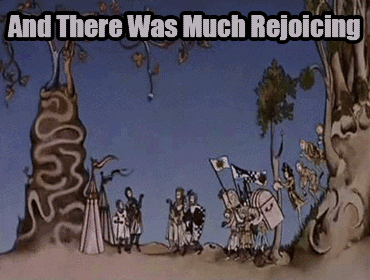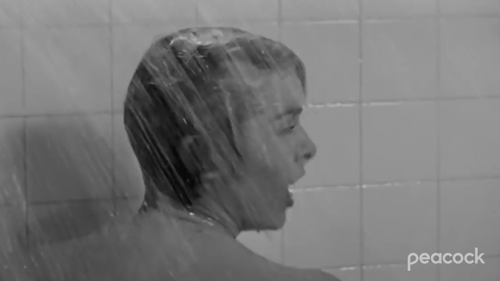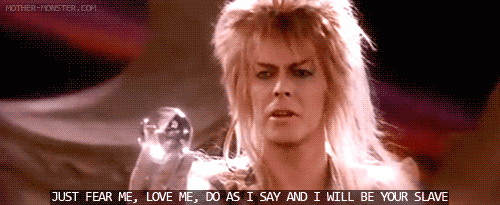The book does start off with a page and a half of “Author’s Notes and Acknowledgements” where Kennealy-Morrison lets her New York chauvinist flag fly. She also thanks Lenny Kaye and Bebe Buell, who provided the blurbs on the backs of two of the books in the series.
And now I see the most shocking thing I’ve read in the entire series:
Thanks to the Usual Suspects, my eagle-eyed betas who are really alphas…
And I’m choosing not to list the names, but how the hell could any of these people have read these books and not pointed out any of the numerous flaws?

After that are the lyrics for the “Walking with Tigers” song, and then the dedication. It seems to be dedicated to her nieces and nephews, as well as the children of a few friends and makes a “The Kids Are Alright” reference.
Now for the prologue itself!

The place and time are established as “New York, December 1969.” In case I haven’t advised of this previously, the entire prologue is in italics and has been in all the other books.
My supposition about the cover, that it’s meant to convey a snowy atmosphere, is borne out by the text, as we wait for the doors of the Fillmore East to open with the crowd, which consists of “…young people, in Navy peacoats and Army-surplus jackets and long Victorian cloaks and vintage furs and embroidered sheepskin Afghan coats…like steerage passengers on the Titanic…” We’re also told they’re waiting for the last show of the night. Then there’s a little historical background about the building before the doors open in the next paragraph.
The next paragraph is color detail about the venue, including a “VIP hideaway” in one of the lighting and sound booths so “visiting notables” can watch the show without having to mingle with the common rabble. I have to think this will be important in terms of the murder plot, but who knows.

The narrator is snotty about the dressing rooms, calling them “utilitarian” and sniffing at “the kind of dreary décor that would not be out of place in a politburo meeting hall in a drab city in Bulgaria.” Well, it isn’t New York City, so how could it be anything but drab?

The next section introduces us to Bill Graham, the owner of the Fillmore East, and someone named Kip Cohen, who is the theater’s managing director, and someone else called Kim Yarborough, the security chief, who’s in the “Author’s Notes and Acknowledgements” section and whose inclusion is explained by “for keeping the peace and being from the ‘hood.” Graham goes onstage to open the show and we don’t find out who’s playing, except that they’re nervous.
The next section takes up after the show, at two AM, and we get three paragraphs of description of the street that I will admit is pretty, along with two paragraphs about where people have gone and what they’re doing after the show. The writing here is fine, probably because it has nothing to do with Rennie or her cultists.
Finally, we get two paragraphs related to the upcoming murder plot. Three people, whom the author sees fit to call out as “stoned,” are on East Second Street and have arrived at “the old cemetery,” so I have no clue as to the name of this place. Servant series flashback!

So they climb over the cemetery gates—if they look like the one on the back cover, it doesn’t seem like a big deal—and we find out the three consist of “two young men, and a young woman whom they both pull up after them.” We know one of the men is Niles Clay (presumably), and the other two are the first two murders of the book. We also know Murdered Girl is a proper, unathletic woman who can’t climb a fence without help.

And they pulled her up by the arms, which makes me wonder why she doesn’t have two dislocated arms. Fuck us, that’s why!
Anyway, they arrive at “the lee of one of the largest and most dramatic monuments” and sit down. Of course it has to be a dramatic monument. What else is good enough for Rennie fucking Stride?

Then we have a three-sentence final paragraph, which isn’t awful but there could be a little more detail to tantalize a reader.
After a while, it grows quiet. One figure leaves; another enters, and leaves again shortly after. Then everything is very, very quiet.
I have to say I’m rather surprised that Kennealy-Morrison hasn’t made Niles either a murder victim or a bad guy, but I guess the thrill of making him essentially the slave of the Rennieturk was too appetizing a prospect for her to turn down. My preference would have been for him to die, but that wouldn’t be enough of a punishment in the writer’s eyes for daring not to worship her or fear her.

Next time, chapter 1, wherein we get a metric fuckton of New York chauvinism, some retconning about the Rennieturk’s move there, and another metric fuckton of boredom about their neighborhood and the purchase of the brownstone(s) and this entire chapter could be cut without damaging the book. Back to the multi-chapter wheel-spinning, I guess.